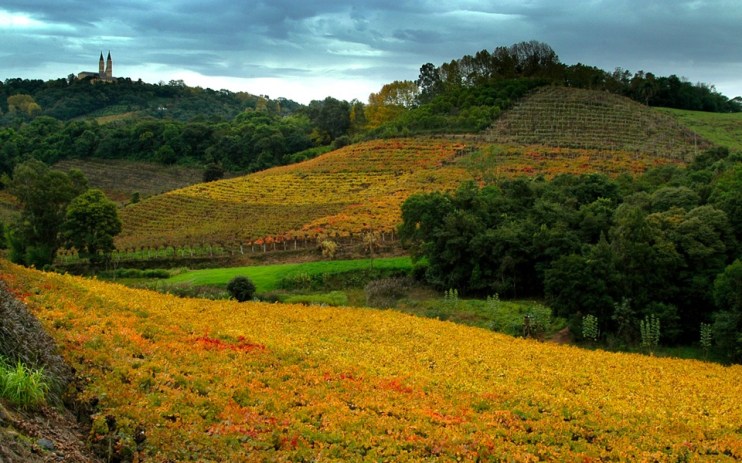The A-Z of wine: F is for… Furmint, the wine variety of tomorrow

What’s this then? Furmit is an Eastern European grape variety, most commonly associated with Hungary but also grown widely in neighbouring Slovenia (where Napoleon’s army gave it the ‘c’est bon’ seal of approval that evolved into the grape’s alternate name, Sipon).
If you’ve ever drunk the iconic sweet wines from the Tokaj region of Hungary then you’ve had Furmint, whether knowingly or not. It’s the principal grape there – the first demarcated wine region in the world – and the base of the liquid known as ‘wine of Kings and King of wines’ (at least until nouveau arrivistes nabbed the title for themselves – yes, looking at you Barolo).
Why does it matter? Think about those pinnacle white grape varieties, the ones that make us go weak at the knees (even before the first glass) and dig into the firstborn’s university fund to snaffle up a case.
You know the ones: Chardonnay, of course. Riesling, undoubtedly. Chenin Blanc, for me. They all share similar characteristics – a backbone of precise acidity, the ability to reflect their growing environment through flavour and texture, and equally suited to making bone-dry styles that thrash like an electric eel, moreish sparkling wines, and lusciously concentrated sweet ones. Know who else shares all of this? Furmint.
Within this spectrum of deliciousness it’s the dry, single varietal styles that are increasingly becoming Furmint’s calling card, and where you’ll be seeing more and more of the variety on shelves over the coming months and years. There’s been a concerted effort to sing Furmint’s praises during February, because there’s nothing that alliteration can’t achieve, so it’s a great time of year to get into your local indie shop and taste some bottles.
What does it taste like? Furmint is the half-sibling of both Riesling and Chardonnay and there’s more than a passing similarity with both thanks to the base of crisp citric and green fruit character (often with a distinctly herbal edge – think sage and mint). When allowed to ripen longer, the citrus and orchard fruit develops into something more akin to ripe apricot and even pineapple – but always with that lick of acidity to finish, and often a marked smoky, flinty character drawn from the volcanic soils that layer much of Hungary. It’s also more than happy in a barrel as well, so if your tastes run more to Meursault than the Mosel you’re not going to be disappointed.
When the grapes are allowed to develop noble rot, which shrivels the berries and concentrates the flavour (the same process that produces Sauternes) the resulting sweet wines – known as Aszu and ranked in the Puttonyos system according the quantity of affected berries used – are often breathtakingly complex. Think candied peel, saffron and caramelised pineapple – and at a fraction of d’Yquem pricing.
What do I buy? Start, as all good things should, with some fizz. Sauska’s NV sparkling (Great Wine, £17.36 when you buy a case) is a great introduction to Furmint-based fizz and if you’re looking for some reassurance, it’s made by Champagne maker Regis Camus, a man who knows a bit about traditional method sparkling wine.
If your tastes are more Prosecco-styled, then 4Haz’s sparkling Furmint (Wanderlust Wine, £10.50) uses the same method as the Italian bubbles but in a slightly drier style.
When it comes to still wines, Sainsbury’s Taste the Difference Furmint is a steal for £9, especially when you consider it’s made by the ever-reliable Royal Tokaji, founded in 1990 by wine royalty Hugh Johnson.
On the more concentrated side is the Furmint from Tokaji Nobilis (£18.50, Novel Wines), fermented and aged in Hungarian oak and showing the variety’s more textural side without ever losing sight of the innate freshness.
That zesty character is vital in the sweet Aszu wines, with Chateau Dereszla’s Aszu 5 Puttonyos (Virgin Wines, £28) more than giving Sauternes a run for its money. Or if you’re looking for something truly iconic, pick up a magnum of Essencia – made solely from ultra-concentrated grapes and the product of often years-long fermentation: yours for a cool £30,000 (Hedonism). Just don’t use it to poach pears in.